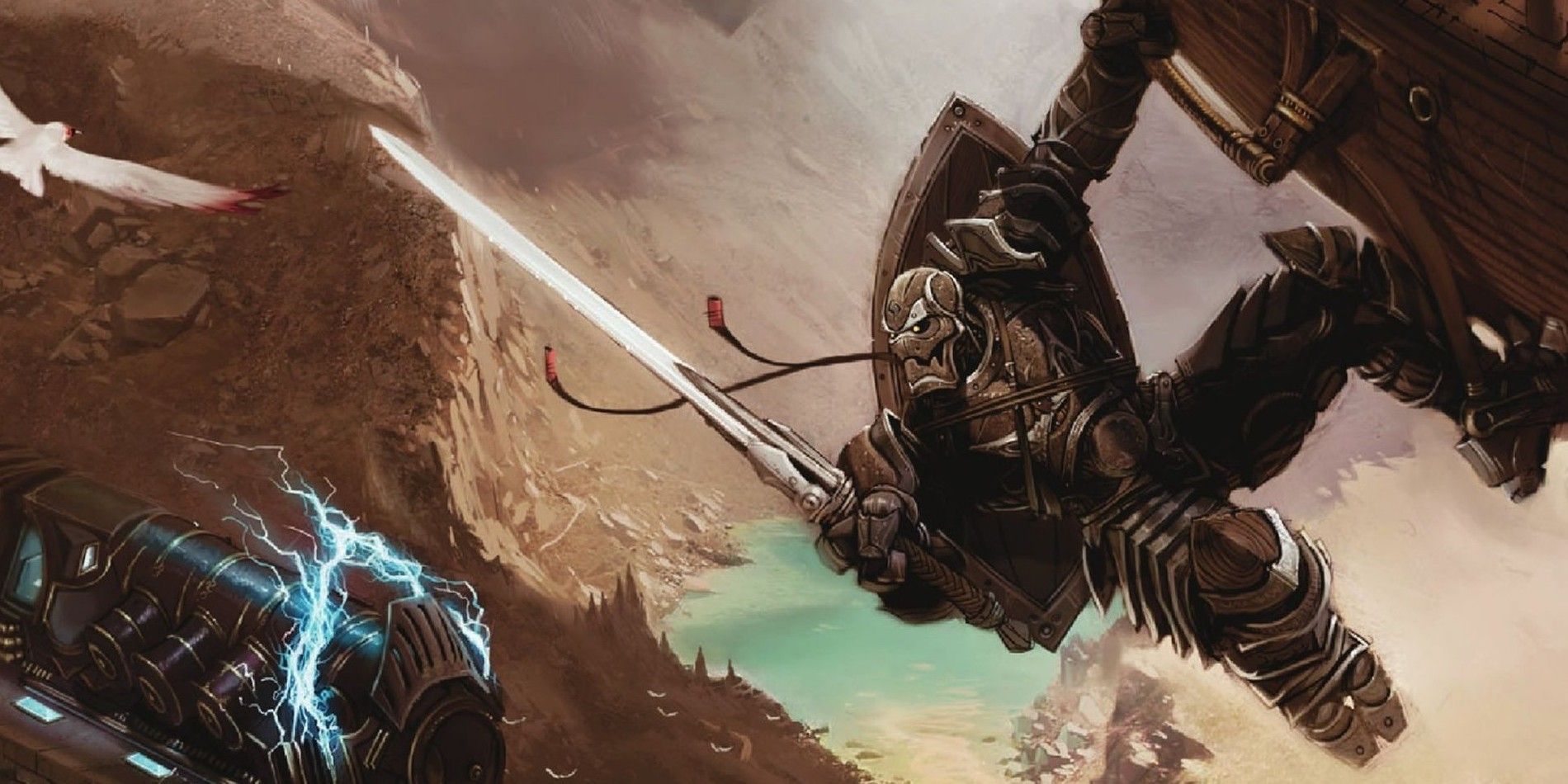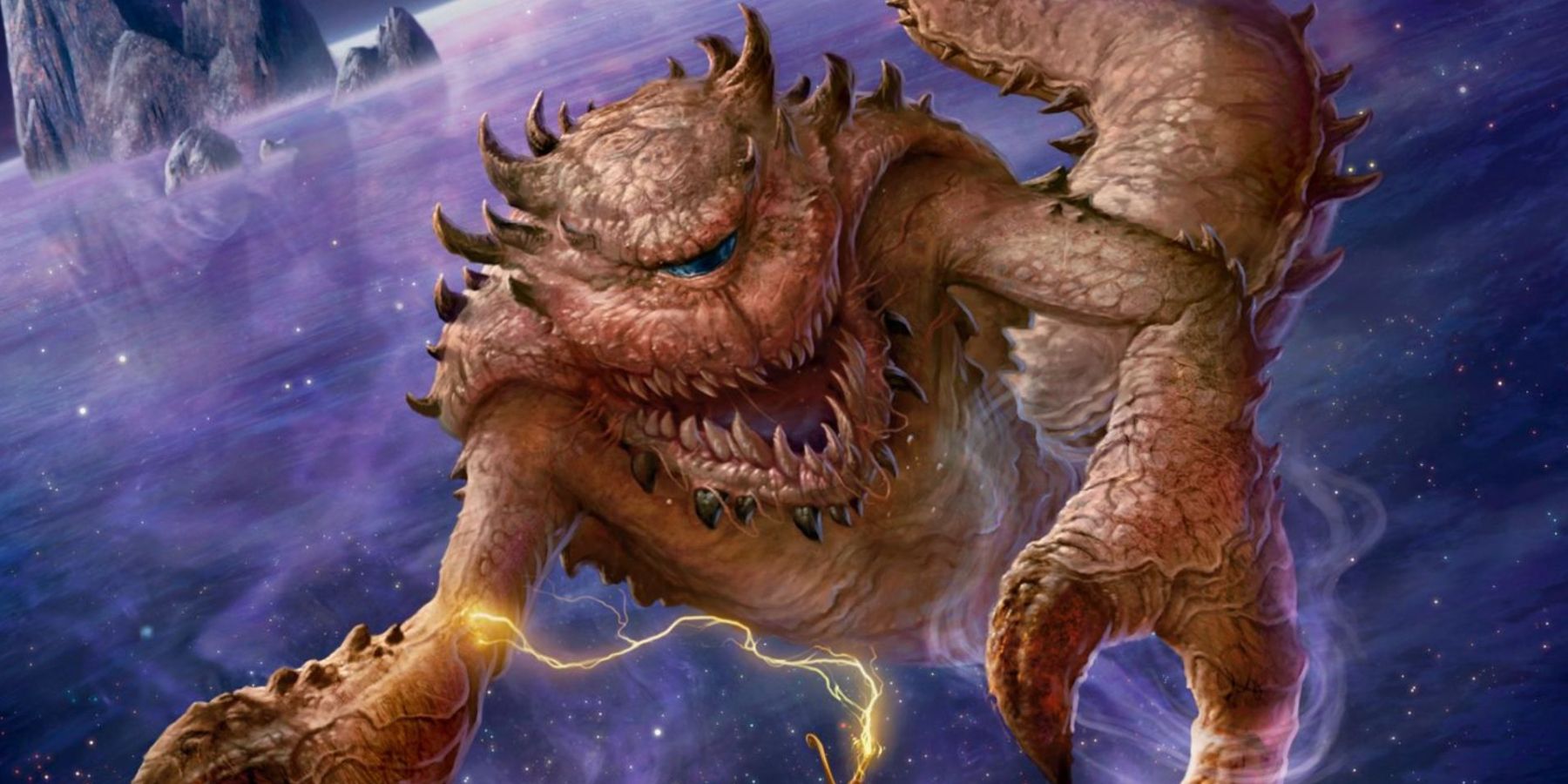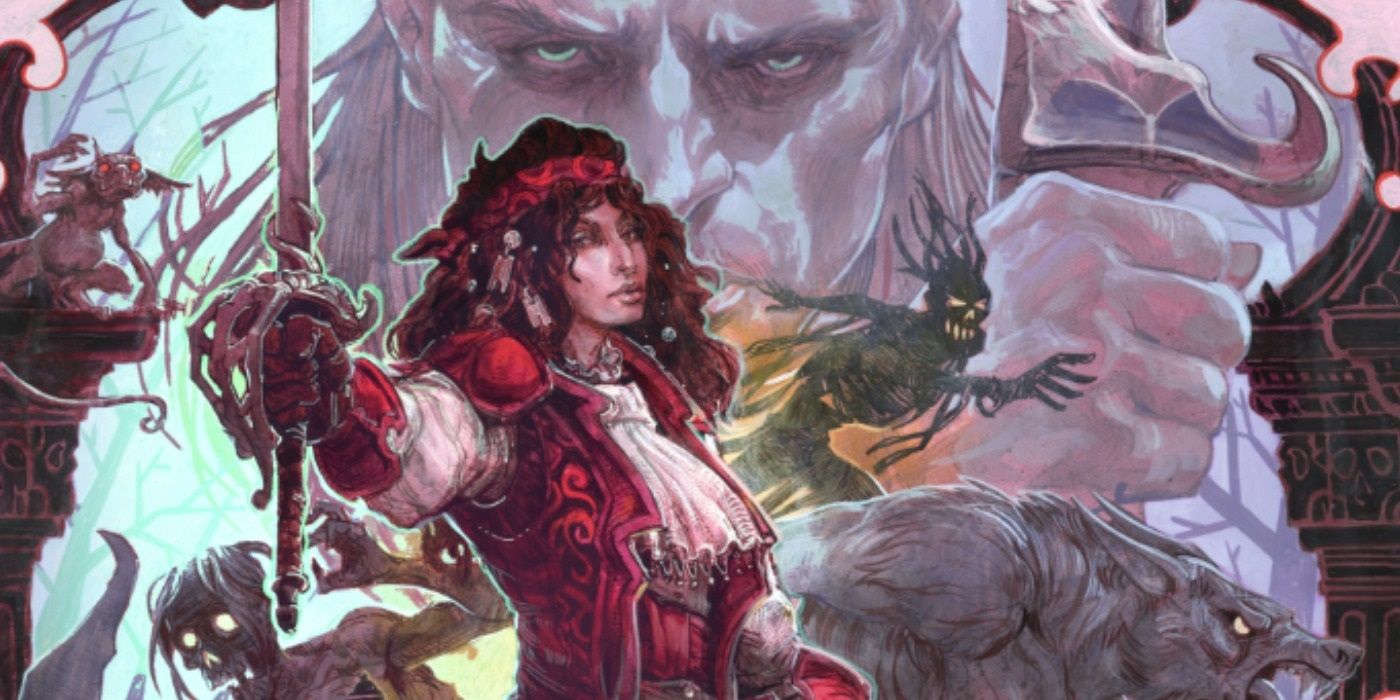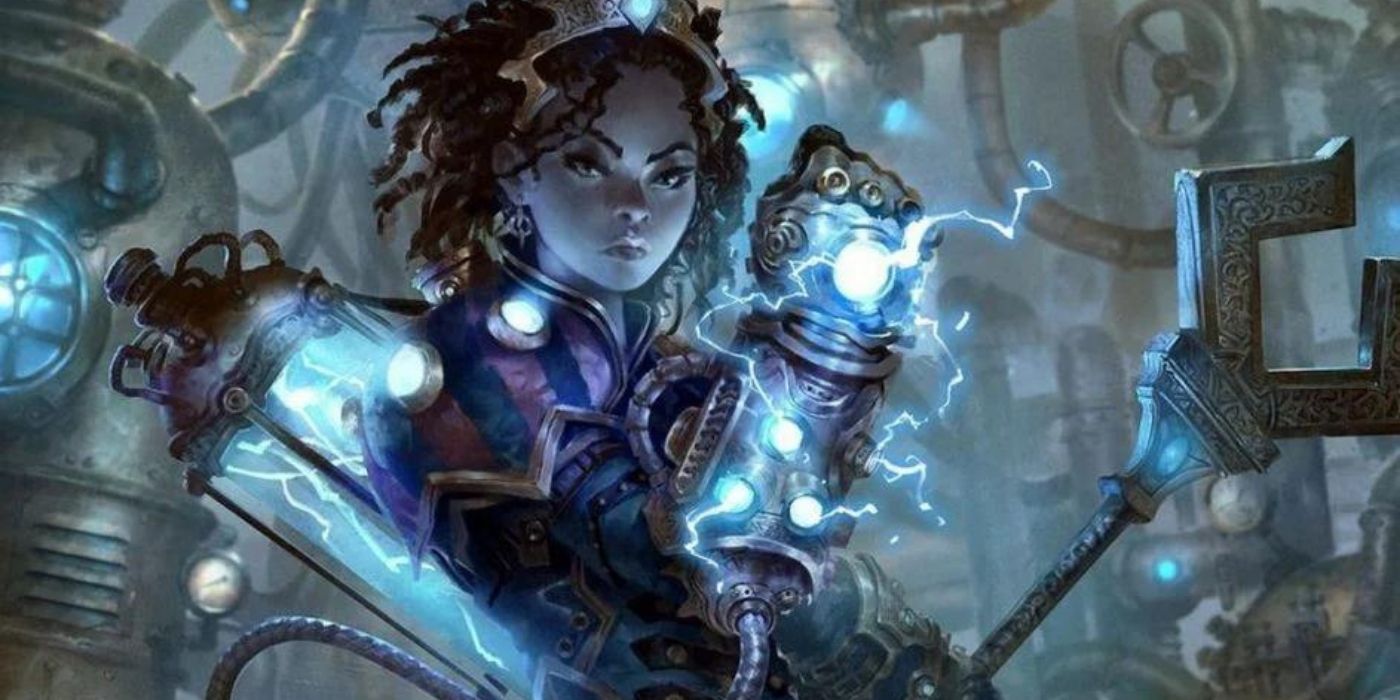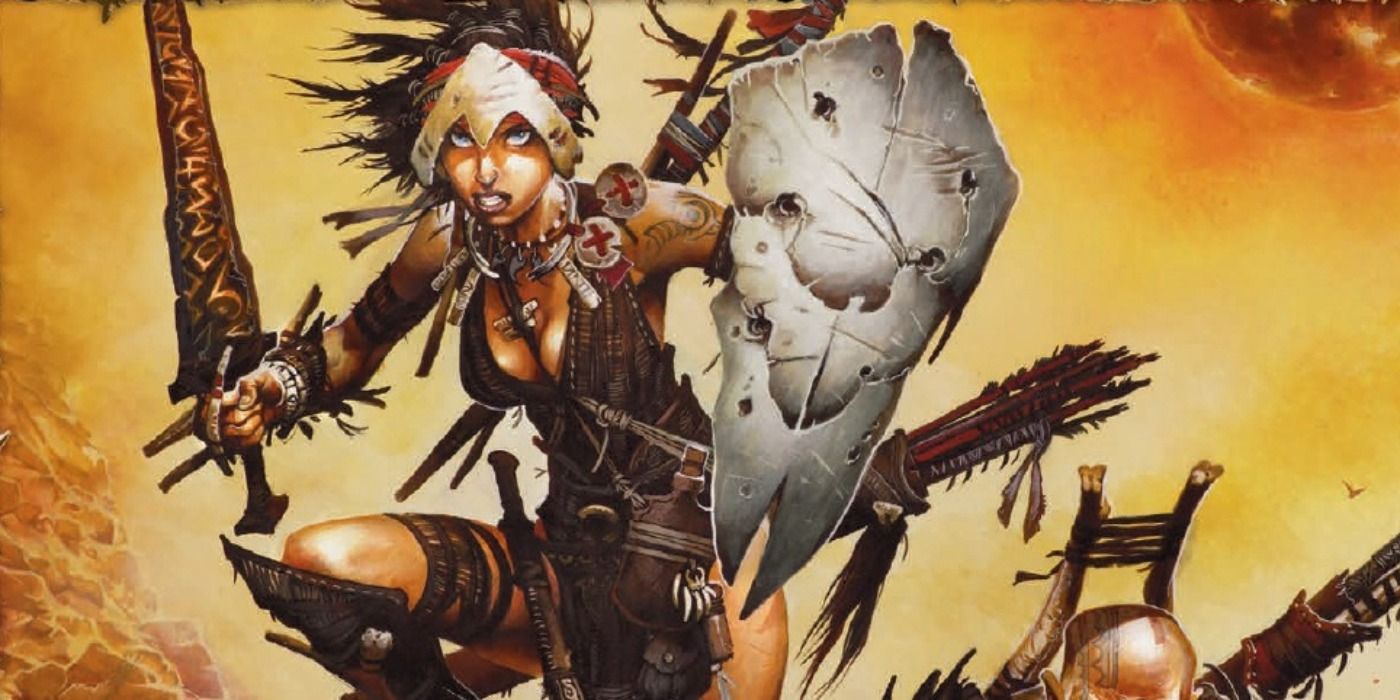Despite the popularity of the 5e Dungeons & Dragons rules, there are some players who find the current edition lacking, and analyzing which of its flaws are the biggest problem areas might help determine which earlier edition of DnD is an ideal fit. The design of fifth edition came on the heels of the innovative - and controversial - rule changes of 4e DnD. Rather than trying to define its own unique identity, the 5e DnD rules were made as grab bag of elements from the game’s history, tied together with a simplified set of core mechanics. Identifying its strengths and weaknesses can point players towards their truly optimal DnD system.
Players experienced in making overpowered 5e DnD characters are aware of the sheer power of martial classes, but in actual combat such builds tend to repeat the same actions every round. This makes fighter builds supremely effective, but boring. Combining Polearm Master or Crossbow Expert, feats that offer bonus action attacks, with Great Weapon Master or Sharpshooter, feats that add to damage, yields consistent high damage. Taking numerous fighter levels adds to the Extra Attack feature. Optimized 5e DnD martial characters will therefore want to take the Attack Action nearly every round, but those looking for more variety in martial characters should look to 4e DnD.
4e D&D Is Best For Combat-Heavy Campaigns, But 3e Has Variety
Though DnD 4e has a complex reputation, it did produce the most robust and tactically rich combat system of any edition the game has ever had, and one of the best among tabletop RPGs as a whole, making it a potentially good alternative to 5e Dungeons & Dragons. 4e's unified progression across all classes was seen as a negative to some, as it made classes feel homogenous, but it did make every class interesting to play, with important tactical decisions each round. Players who enjoy martial classes but want them to have more decisions than which enemy to prioritize with their Attack Action, may find that 4e DnD already provided the perfect system.
Some battles can become tedious in DnD 5e; even low to mid-level monsters often have disproportionately large hit point totals, but rarely anything interesting to do in combat. Far too many 5e monsters rely on a bland Multiattack and have very few other compelling options. This can turn battles into a slog as players chip away at bloated enemy HP totals without any real sense of stakes or peril. Players (and DMs) concerned with boring combat encounters should absolutely look to 4e as an alternative. Combat is inarguably the most important pillar of DnD’s design and looking to the edition with the best combat system, 4e, will make sense for many.
The core rules of 5e are largely a simplified take on the 3e DnD rules, with some 4e modifications and improvements, along with a few quirks of its own. Players who mostly enjoy the 5e structure, but want more options, may find that the 3.0 and 3.5 rules that inspire 5e DnD could be a better fit. While DnD 5e has power creep, the phenomenon where new content becomes more powerful than what was available in the core Player’s Handbook is taken much further in 3e DnD's systems. Though much of its balance was questionable, in terms of sheer options, it is hard to beat 3.5 Dungeons & Dragons.
Those options include character build options, as 3.5 had a massive number of classes and prestige classes available by the end of its run, as well as varied ways to interact with the game world. Though 5e DnD saw a return of the “utility magic” spells that were mostly absent in 4e, the third edition DnD systems still offered more. This could make playing a caster daunting for some, as wading through the huge number of available spells across various supplements can seem overwhelming. The 3e skill list also allowed for more specific specializations, as it included a wider variety of knowledge skills and broke Athletics into multiple skills.
AD&D Is Still Viable For Throwback Dungeons & Dragons Games
Some of the stranger elements of 5e are present as homages to DnD’s roots, like the magic items that set abilities to a specific score rather than increasing a base statistic. Items like the Belt of Giant Strength or the Headband of Intellect allow a character to dump a stat and replace it with an attuned magic item, rather than supplementing a strong stat as with the 3e magic items for stat enhancement. Some groups love the old school style and play 5e without feats of multiclassing to add to the throwback vibe, but any group trying to turn 5e into old school DnD is better off playing an earlier edition.
Eliminating feats and multiclassing actually makes 5e DnD more unbalanced, as casters derive most of their efficacy from spells, where martial classes rely on feats to contribute. While Advanced Dungeons & Dragons and 2e AD&D were more concerned with simulating a specific style of fantasy adventure than the modern concept of game balance, they will still yield a better old school experience than modifying 5e DnD to be something it is not by restricting options. Those looking for an old-fashioned dungeon crawl, or wanting to experience the quirky AD&D rules showcased in Stranger Things, can look to either 1e or 2e AD&D.
Basic D&D Can Provide Simpler Rules Than 5e
The 5e DnD rules are possibly the simplest and most streamlined system the game has ever offered. For those who still find 5e too complex, limiting options to make the game even simpler will only produce an unsatisfying experience for everyone involved. There are many rules-light tabletop RPGs that could be the right answer for such a group, but those wanting to stick within DnD may find that one of the many variants of Basic DnD work best for them. Basic D&D was the retroactively coined term for all versions of the game prior to Advanced D&D. 5e core rules are still simpler than Basic rules, however.
The earliest versions of Basic D&D evoke simplicity through their limited options, with elements like low level caps, and demihuman races like Elf and Dwarf operating as their own character classes. They still present more complexity than 5e in many ways, though. Basic D&D lacked the unified mechanic of a scaling proficiency bonus, and it featured entirely different systems for resolving combat and determining the success of thief class skills, where 5e DnD relies on a universal mechanic of aiming to roll high on a d20 and adding or subtracting relevant modifiers. Still, the 1983 D&D Basic Set rules do provide an entry point that is arguably easier than learning 5e.
The entire D&D Basic Set, labeled the BECMI edition, is still available for PDF purchase through DriveThruRPG, along with core books and supplements for every subsequent version of DnD prior to 5e. As 5e pushes digital play more, there becomes less incentive to seek out books that are in print as opposed to buying digital copies of tabletop RPG manuals. This puts the formative editions of DnD on an even playing field with the current rules, for many groups. Groups can select between the entire history of DnD to find their preferred game, instead of being limited to what is on the shelf at a brick-and-mortar store.
The Right D&D Edition Might Depend On The Campaign
There are other considerations a player can factor into their Dungeons & Dragons edition choice. Those who want the mechanics to reflect how a character’s rise in power impacts their role in society may prefer editions before 3e, where gaining a keep or stronghold was a routine part of level advancement. Not every campaign fits within the framework of classic DnD, however, and such rules are of less use with unconventional campaign settings like Dark Sun or Spelljammer. For most groups, the focus of the game might dictate which edition is right for them, or even for a particular campaign, though learning a new rule set for each game can be challenging.
For the bulk of DnD groups, where the feeling of progression from novices to legends is important, and battles are central to the experience, 4e DnD remains the peak of the game’s design. Those who found the skill challenge system restrictive, or who did not feel it offered sufficient options for non-combat encounters, may enjoy the myriad utility options available in 3e DnD. For those who like a little of each, and want a simple system, 5e does offer a bit of everything. Dipping into the history of Dungeons & Dragons could help some players appreciate 5e’s design, if nothing else, to see how just far the game has evolved.
Source: DriveThruRPG

